I was exploring my neighborhood when I first stumbled upon the Alocasia reginula at a quaint plant shop.
The lovely velvet-like leaves with silver veins had me instantly smitten, and I knew I had to add this unique gem to my houseplant collection.
I’ve always been a fan of Alocasias.
They’re relatively easy to care for, and the lovely leaves make them perfect for any interior, but the Alocasia reginula is extra special because of its velvety texture.
Through trial and error, I learned a lot about caring for this captivating plant. In this blog post, I’m excited to share my personal journey and tips on successfully growing and caring for your very own Alocasia reginula!
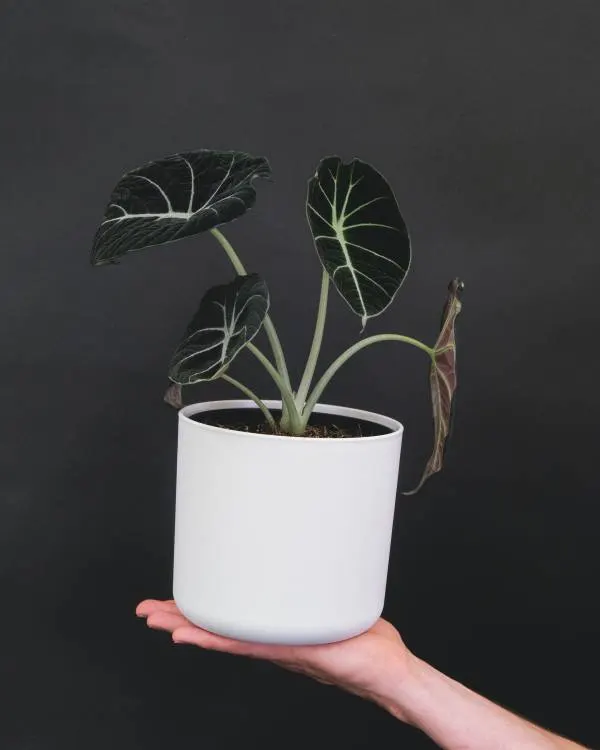
A Brief Introduction of Alocasia Reginula
Alocasia reginula, native to the lush tropical rainforests of Borneo, is a stunning houseplant that goes by several names, such as Black Velvet or Little Queen. Its unique characteristics set it apart from other houseplants, making it a sought-after addition for plant lovers.
What truly sets the Alocasia Black Velvet apart is its velvety, almost black leaves adorned with striking silver veins, making it an excellent pick for bringing nature indoors. The contrast between the deep, dark foliage and the shimmering veins gives the plant a dramatic appearance that never fails to catch the eye.
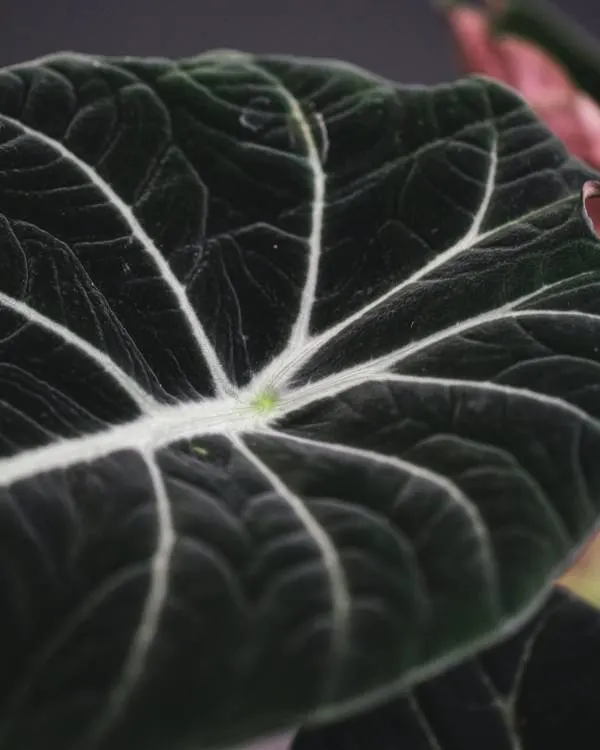
In my experience, guests often gravitate towards this plant, curious about its peculiar beauty, and are always eager to learn more about it.
Understanding the background of this enchanting houseplant can provide insight into its specific care requirements, ensuring it thrives in your home as it would in its natural habitat. In the following sections, I’ll delve into my personal experiences and the lessons I’ve learned while caring for my Alocasia reginula so that you can nurture your own with confidence.
Let’s dive in!
Ideal Growing Conditions to Take Care of Your Alocasia Reginula
Alocasia reginula are low-maintenance plants and only need a few things to be happy and healthy.
Here are the ideal growing conditions for your Alocasia reginula:
1. Best Location and Lighting Conditions to Grow Alocasia Reginula
One of the most critical aspects of caring for Alocasia reginula is finding the right location and lighting conditions for the plant.
When I first brought my Alocasia home, I was unsure where to put it, which led to some experimentation. So, I tried several spots around the house to find the ideal location for my Alocasia reginula. I noticed that when placed too close to a south-facing window, the leaves began to show signs of sunburn. Conversely, the plant’s growth became sluggish when placed in a dim corner.
Ultimately, I settled on a spot near an east-facing window, where it received dappled sunlight throughout the day.
This plant thrives in bright, indirect light — an east or west-facing window provides the perfect balance of light without causing harm to the delicate leaves. Direct sunlight can scorch the leaves, leaving unsightly marks or causing them to turn yellow. On the other hand, insufficient light can lead to slow growth or leggy stems as the vines try to reach for the sun.
If you notice your Black Velvet’s leaves yellowing or becoming leggy, it’s time to reevaluate the lighting conditions.
Adjusting the plant’s location to achieve the perfect balance of light is essential for its health and vitality.
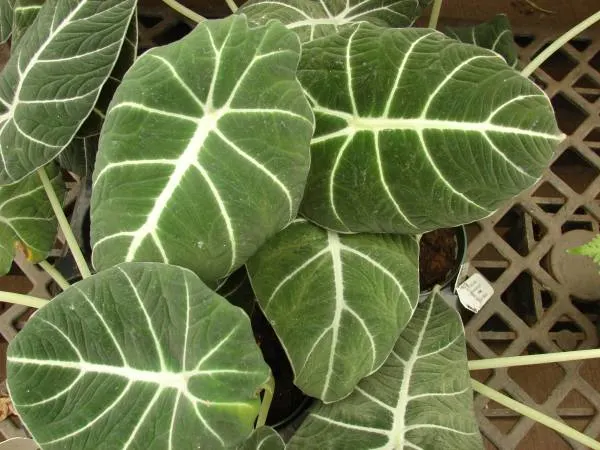
2. Watering and Humidity Requirements of Alocasia Reginula
Let’s get down to the basics – how much water does it need?
Proper care for this exotic tropical houseplant requires adequate water and humidity levels.
Like many new plant owners, I had to find the right balance when watering my Alocasia. Alocasia Black Velvet prefers evenly moist soil but is sensitive to overwatering, which can lead to root rot.
Allowing the top inch of soil to dry out between waterings is essential to avoid soggy conditions. You can check the soil’s moisture with your finger or a moisture meter before watering, ensuring you don’t overdo it.
As a tropical plant, the Black Velvet thrives in a humid environment. In my experience, maintaining adequate humidity levels is crucial to keep your Alocasia happy and healthy.
I experimented with various methods to increase humidity around my plant, such as using a pebble tray filled with water or running a humidifier nearby. Misting the leaves occasionally also helped, but it’s essential to avoid water sitting on the leaves for extended periods, as this can cause issues like fungal infections.
3. Best Soil Mix and Fertilizer Requirements of Alocasia Reginula
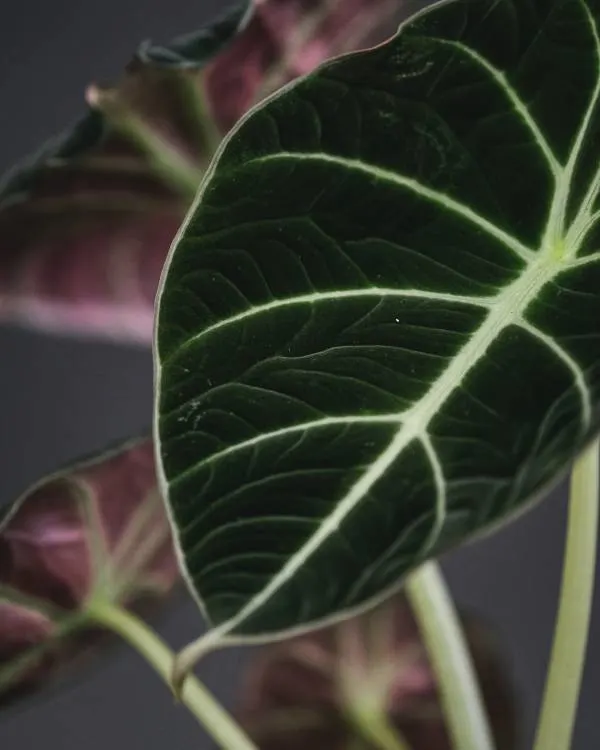
Choosing the right soil mix and providing proper nutrients are essential aspects of caring for your plant.
Alocasia reginula thrives in a well-draining soil mix rich in organic matter. A combination of peat moss, perlite, and high-quality potting soil perfectly balances drainage and nutrients. This mix allows the roots to access moisture and air, promoting healthy growth and preventing root rot.
Fertilizing your Alocasia is also an essential aspect of its care.
During the growing season, from spring to early fall, I apply a diluted, balanced liquid fertilizer every four to six weeks.
That added nutrition encourages lush, vibrant growth and supports the plant’s overall health.
It’s essential to reduce or stop fertilizing during the winter months, as the plant enters a period of dormancy and requires less nutrition.
4. Common Pests and Diseases that Affect Alocasia Reginula
Even with the best care, the Black Velvet sometimes falls victim to common garden pests and diseases.
I’ve faced my share of challenges in keeping my Alocasia healthy, but through experience and research, I’ve learned how to prevent and treat these issues.
How to Get Rid of Alocasia Reginula Pests?
Some common pests that affect Alocasia reginula include spider mites, aphids, and mealybugs.
Regularly inspecting your plant for signs of these pesky pests would be the best way to catch them early on and treat the infestation.
If you notice a few spider mites on your Alocasia, promptly treat the plant with a mixture of water, dish soap, and neem oil to successfully eliminate the infestation.
Regularly wiping the leaves with a damp cloth also helps keep pests at bay.
Treating Diseases in Alocasia Reginula
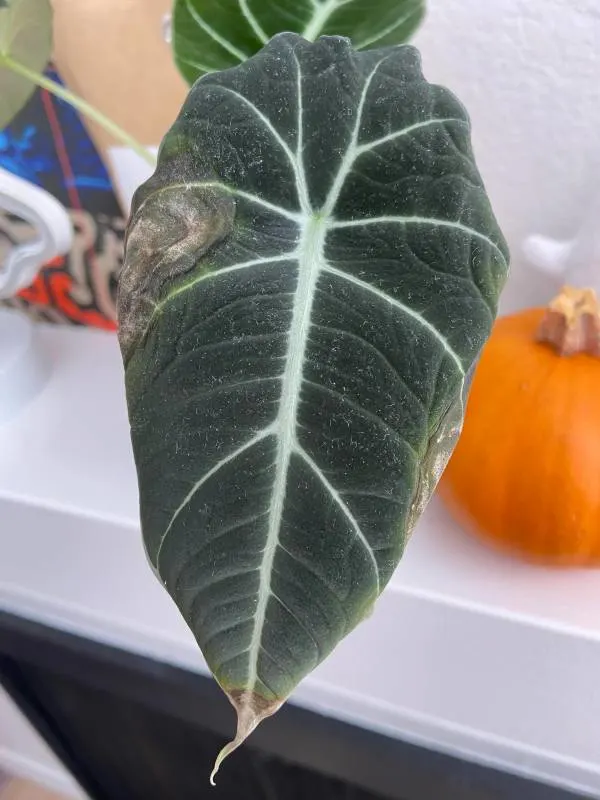
One of the most common Alocasia reginula diseases is root rot, often caused by overwatering.
Most people face this challenge when they first start caring for their Alocasia and quickly learn the importance of proper watering techniques and well-draining soil.
To treat root rot, remove the affected roots, allow the healthy roots to dry, and repot your plant in fresh, well-draining soil.
Being proactive in preventing pests and diseases and addressing issues promptly when they arise, you can effortlessly maintain a healthy Alocasia Black Velvet.
That’s all for today’s article!
Concluding the Talk
By keeping a watchful eye on your plant and providing it with the proper care, you can help it overcome any challenge and continue to thrive, and with the ideal growing conditions and caring tips provided in the article, you can make yourself a proud plant parent!
I hope you find this article helpful. If so, make sure to share it with your friends. Also, if you have any questions regarding the topic, ask them out in the comments section below. I’ll get to you as soon as possible.
Regards,
Happy gardening!
